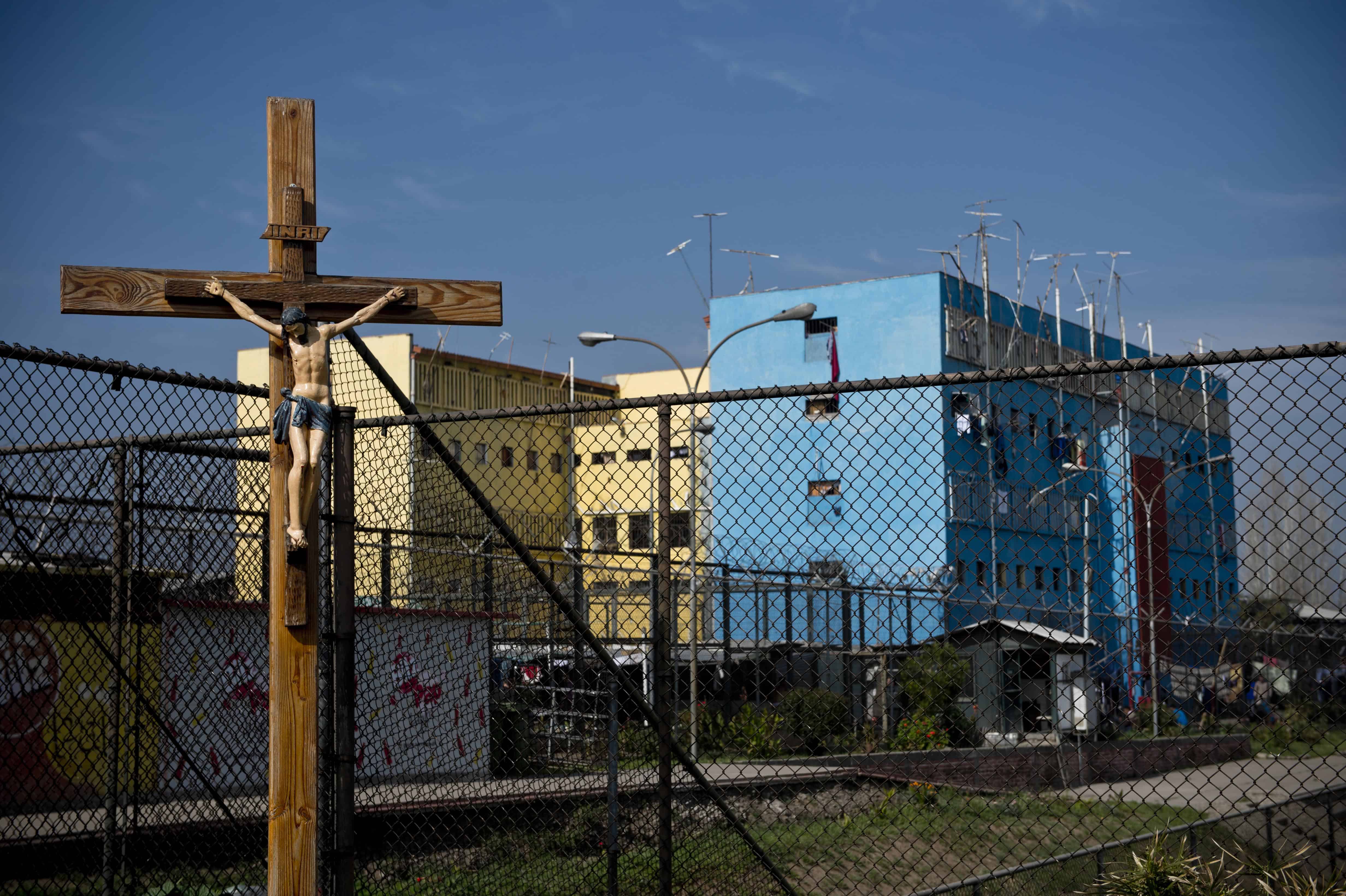By most statistical measures, Latin America’s mano dura (iron fist) approach to crime has failed. The tough sentencing policies and draconian prison regimes adopted by most countries in recent decades have had almost no evident impact on crime rates. Even as prison populations in the region have skyrocketed, soaring homicide rates have made Latin America the most violent region in the world.
This has presented policymakers with a dilemma. The tough-on-crime policies are at least in part a response to mounting citizen concerns about public safety, whether in relatively peaceful Chile or organized crime–ridden Mexico. In the nine countries in the region surveyed by the Pew Research Center in 2014, a median of 86 percent of citizens find crime to be “a very big problem.” Public pressure has led governments in countries suffering the highest crime rates — such as Guatemala, Mexico, Brazil, Honduras, and Venezuela — to step up their use of blunt crime-fighting tools, ranging from harsher sentencing to the militarization of police forces.
But there is a way out of this dilemma — a more efficient and humane approach that can reduce both crime and recidivism. Achieving this requires a willingness to think of creative and alternative solutions that address the root of the problem in Latin America — the criminal justice system itself.
The myth of incarceration and crime control
The first step in adopting such an approach is discarding the myth that prisons alone are effective forms of crime control.
The core objectives of punishment are threefold: lock up offenders to prevent them from committing further crimes (incapacitation); discourage both offenders and would-be offenders from perpetrating crimes (deterrence); and help offenders to reintegrate into society (rehabilitation).
Latin America’s penal policies have largely, and mistakenly, focused on the first objective. Imprisonment has been the most common form of punishment administered by criminal justice systems in the region. But Latin American prisons have been notorious breeding grounds for criminality. Instead of rehabilitating offenders, they have been “schools for crime.” First-time offenders — including youth — who are placed together with habitual criminals or gang members quickly learn that they need to adopt the codes and methods of the larger prison population if they want to survive.
Rehabilitation plays little role in current incarceration strategies. Prison terms are handed out based on arbitrary guidelines according to the type of crime, with little effort to assess the specific circumstances of the offender or what is needed for rehabilitation. Parole and alternative sentences such as probation and community work exist under law but are underused in practice. While programs intended to provide inmates with counseling and skills for post-release employment exist in some countries, such as Costa Rica and the Dominican Republic, they are largely regarded as ineffective. Furthermore, the social stigma attached to incarceration makes it a challenge for former inmates to find legitimate work upon release, and thus increases the chances of reoffending.
Since 1992, incarceration rates have soared in every Latin American country, with most doubling their rates, and many others tripling or even quadrupling their number of inmates. In particular, the proportion of people imprisoned for drug offenses, due to an expanded focus on consumers and low-level dealers, has increased. It should surprise no one that these numbers have strained the resources and services available in the prison system. As a direct consequence, Latin American prisons have become infamous for overcrowding and inhumane living conditions. There is little to no opportunity for inmates to learn skills, participate in productive activities or gain access to rehabilitation programs. Human rights abuses abound.
In fact, the number of individuals trapped in the region’s justice systems is likely far higher than the actual number of convicted prisoners. The abuse of pretrial detention is one of the most glaring examples of the dysfunctional state of Latin American justice. On average, 48 percent of those detained in Latin American jails are awaiting trial. This is due to legal restrictions on the use of alternative measures such as electronic bracelets or house arrest for many crimes (including drug offenses), a lack of judicial mechanisms to challenge the arbitrary application of pretrial detention and the prevalent use of pretrial detention for minor offenses. Additionally, most pre-trial detainees are too poor to afford legal help or bail, and the public defender system is practically nonexistent.
No one disputes the premise that individuals who commit acts of violence and remain a danger to others belong behind bars — often for lengthy terms. But for most of the prison population, long prison sentences are counterproductive — not just for their own potential for rehabilitation, but for society at large.
A further complicating issue is that in Latin America, the worst criminals rarely appear in court at all. Official corruption and the ineffectiveness of courts and law enforcement gives some of the most threatening criminals impunity. This systemic inequality — and lack of transparency — undermines whatever benefit policymakers hope to gain from the use of incarceration as a deterrence strategy.
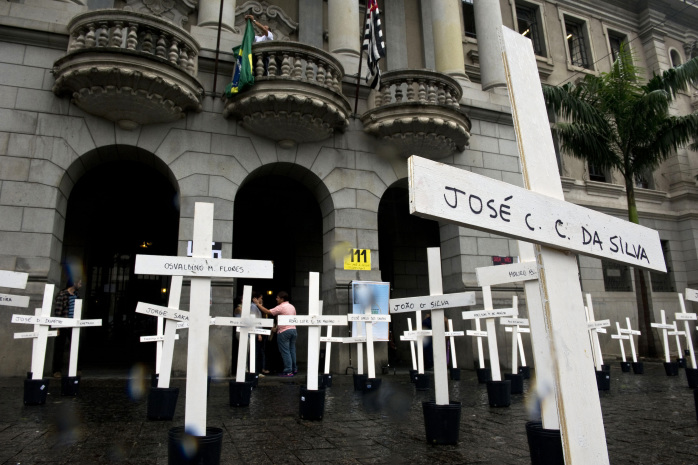
Change isn’t easy
As a result, adopting a new paradigm of crime control based on a less draconian criminal justice system is an uphill battle in the region. Many criminologists now argue that the most effective tool for reducing crime and recidivism is not the length of a sentence, but its predictability. So-called “swift and certain” punishment means reducing the length of time between arrest and trial, and establishing clarity in punishment. This approach has been successful in the United States, where in some cities, young first-time offenders picked up on minor drug or gun charges are placed under mandatory supervision or counseling with the warning that if they fail to live up to the terms of their sentence, their punishment will be increased.
These tactics, of course, depend on a properly managed and well-designed structure that provides alternatives to prison. Many jurisdictions in the U.S. and Europe have developed specialized courts (such as drug courts or family courts) where a judge’s role is not primarily to hand down sentences, but to coordinate available resources in the community — such as substance abuse counseling — that can divert offenders from further criminal activity. These approaches have not only proved effective as a crime reduction strategy, but have reduced the strain on justice system resources.
Yet even in the U.S., the reform movement has been inconsistent. While the prison population has been reduced in many states, efforts to address the harsh policies of previous decades, such as mandatory minimum sentences for non-violent drug offenses, have lagged.
Most countries in Latin America remain a long way from the attitudinal, legal and structural changes required to adjust their criminal justice policies. The difficulties they face are epitomized by Brazil and Chile, two countries with starkly different crime problems. While both countries have begun to experiment with different legal approaches, each demonstrates the limitations of excessive reliance on incarceration. Their experiences offer some valuable lessons for policymakers elsewhere in the region.
Brazil’s crime schools
Violent crime is pervasive in Brazil, both on its streets and in its prisons. In 2012, Brazil registered 11.4 percent of all homicides in the world, despite having only 2.8 percent of the world’s population.
Yet as early as 1995, Brazil’s inquisitorial system adopted some innovative features from the more transparent, adversarial system used in the U.S. to make the judicial process more efficient. The reform opened the door to alternative sentencing for minor crimes that carry sentences of no more than two years, such as traffic accidents, slander and defamation. Non-violent drug offenses, however, were not included in the reform, and continue to be penalized primarily with prison. Drug offenders are now the single largest factor in the increase in Brazil’s prison population.
A drug law passed in 2006 removed prison sentences for possession of drugs for personal use and underscored the role of prevention, but it also raised penalties for trafficking. Since the law did not specify what constitutes possession for personal use and also closed the door to alternative sentencing, it led to discretionary arrests and the mass incarceration of mostly small-time dealers who are typically poor, young black males.
The result of this excessive incarceration is a prison system known internationally for its brutality. Gang warfare, torture, beatings, and other maltreatment by prison authorities — and rioting in response to this abuse — make Brazilian prisons some of the most dangerous in the world.
Moreover, Brazilian prisons are extremely overcrowded. Between 2001 and 2012, the prison population nearly doubled to 548,003 inmates, making it the fourth-largest prison population in the world, with among the highest prisoner per capita rates in the region. The proportion of those under pretrial detention also expanded, accounting for 38 percent of the total prison population by 2012.
Brazil’s focus on incarceration has clearly failed to curb violent crime. Since 2005, the homicide rate has remained at a steady, very high level of 25.2 per 100,000 people. The construction of new prisons — the favored response by authorities — might alleviate overcrowding, but it will ultimately fail to address the root problem of a system that uses incarceration as its primary tactic.
Human rights groups have pushed hard for drastic reforms to Brazil’s prison system, demanding actions such as substituting alternative sanctions for prison sentences for non-violent offenders and small-scale drug dealers, and stopping the abuse of pretrial detention. These actions would significantly reduce the prison population and allow the criminal justice system to focus on graver crimes.
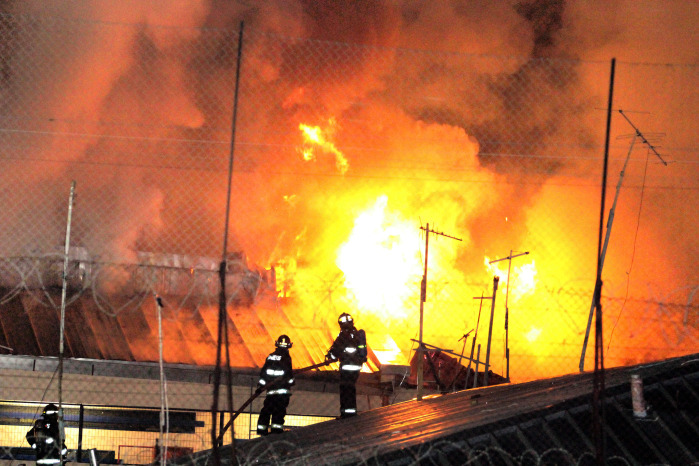
The Chilean prison paradox
In contrast to Brazil’s epidemic of violence, Chile is one of the safest countries in Latin America. It has one of the lowest homicide rates in the region, registering no more than four homicides per 100,000 inhabitants a year since 2003. And yet, Chile’s incarceration rate is one of the highest in Latin America. Chileans lock up nearly as many people per 100,000 inhabitants as crime-stricken Brazil.
The conditions in Chilean prisons are also strikingly similar to their Brazilian counterparts. A 2013 study of Latin American prisons by the United Nations Development Programme (UNDP) showed that 79 percent of Chilean inmates feel less safe in prison than where they lived before incarceration — more than inmates in high-crime countries like El Salvador, Brazil and Mexico. The proportion of inmates who have been physically abused in prison was also higher in Chile: 72 percent reported being beaten by prison staff, compared to 66 percent in El Salvador, 40 percent in Mexico, and 36 percent in Brazil.
Prison overpopulation is also a concern, with an occupancy rate of 118 percent, which is worsened by substandard living conditions within prison walls.
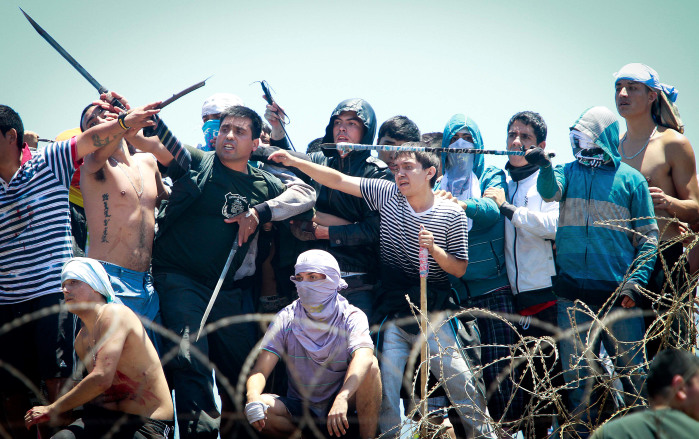
Why do Chile’s prisons look like Brazil’s?
In 2000, Chile’s criminal justice reform established an adversarial system intended to expedite and deliver justice more efficiently. Trials were indeed accelerated, but more offenders were imprisoned, as the probability of conviction increased considerably. Moreover, prison infrastructure did not expand at the same rate as imprisonment, generating overcrowded facilities in which violent and non-violent offenders had to mingle. Harsher sentences were also introduced, especially for property and drug offenses.
A drug law passed in 2005 (Law 20,000) criminalized small-scale trafficking, increased penalties for soft drugs like marijuana, and eliminated the use of alternative sentencing, which had been introduced in 1983. The law allows personal consumption; however, as in Brazil’s case, the law also penalizes possession (which accounts for the bulk of convicted felons) without establishing clearly what constitutes possession for consumption or trafficking. The impact on the prison system was substantial. The proportion of offenders sentenced for drug offenses increased fourfold in the five years following the law’s implementation. A 2012 amendment to Law 18,216, making drug and alcohol-related offenders eligible for alternative sentences, could help ease the burden of the prison system.
Like Brazil and the rest of Latin America, Chilean civil society has supported harsher measures to tackle crime. Many see alternative sentences as unfair and ineffective, a reason why the government began referring to these as “substitute penalties,” which denotes a sanction rather than a benefit to offenders.
While Chile has been an example of justice reform in Latin America, it has failed to improve prison conditions and curb overcrowding. Laws criminalizing nonviolent behavior like drug possession continue to fill prisons. For her second term in office, President Michelle Bachelet vowed to prioritize reforming Law 20,000, including designating marijuana as a “soft drug” and clearly differentiating drug possession and small-scale trafficking.
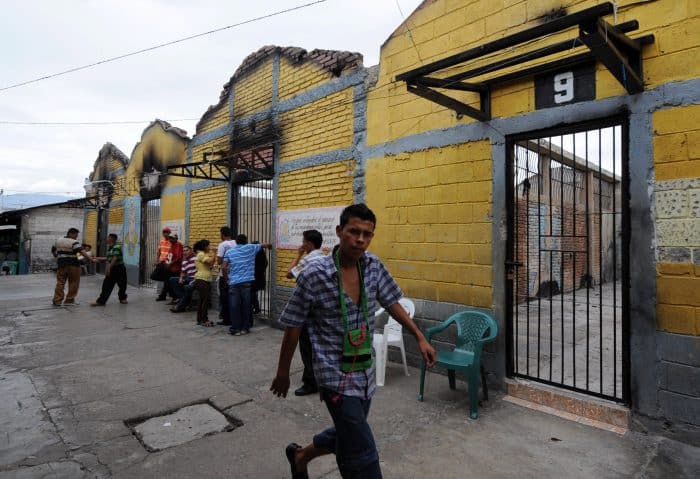
How should incarceration fit in?
Higher rates of incarceration and raising prison sentences will not solve the region’s crime problem. Violence-ridden prisons have only helped to reproduce and sustain an underworld where individuals have little hope of overcoming their wrongdoings and becoming law-abiding citizens.
One clear example of this vicious cycle is Mexico, where criminal violence has been widespread. The criminal justice system relies too heavily on prisons, with over 95 percent of sentences involving imprisonment and the proportion of inmates in pre-trial detention at around 43 percent.
In 2008, then-President Felipe Calderón proposed reforms aimed at making the justice system more transparent and fair by standardizing criminal procedures in all 32 states, increasing the use of alternative sentencing mechanisms, and rationalizing the use of prison sentences. The reforms, which have a 2016 deadline, are facing numerous stumbling blocks in their implementation. So far, only the first reform has been passed in Congress, and most state governments have yet to fully adapt to the new rules. The two other laws are stuck in the legislature, and political will to discuss them is scarce.
Mexico took a step in the right direction, but passing the second two components of the reform is critical. The solution lies in finding ways to truly rehabilitate offenders, discourage individuals from turning to crime and reform the penitentiary system. This includes fixing infrastructure and reducing overcrowding, confining violent criminals who are most likely to harm others, providing job training to inmates, and offering proper training and salaries to prison staff. Prison reform should be an end in itself, as this can be done with little risk to citizen security.
Besides these guidelines, promoting the comprehensive study and application of alternative punishments should be considered a pragmatic solution for crime control. Together with wide-ranging policies to transform prisons into civilized places for offenders to be housed, Latin American governments must weigh the practical impact of pushing reform in the direction of evidence-based policies, rather than political expediency.
–
Jorge Kawas is a researcher, analyst and writer covering security risks in Latin America. This article was originally published in the Winter 2015 issue of Americas Quarterly (www.americasquarterly.org). It is published here with permission. Please visit the original story here.

